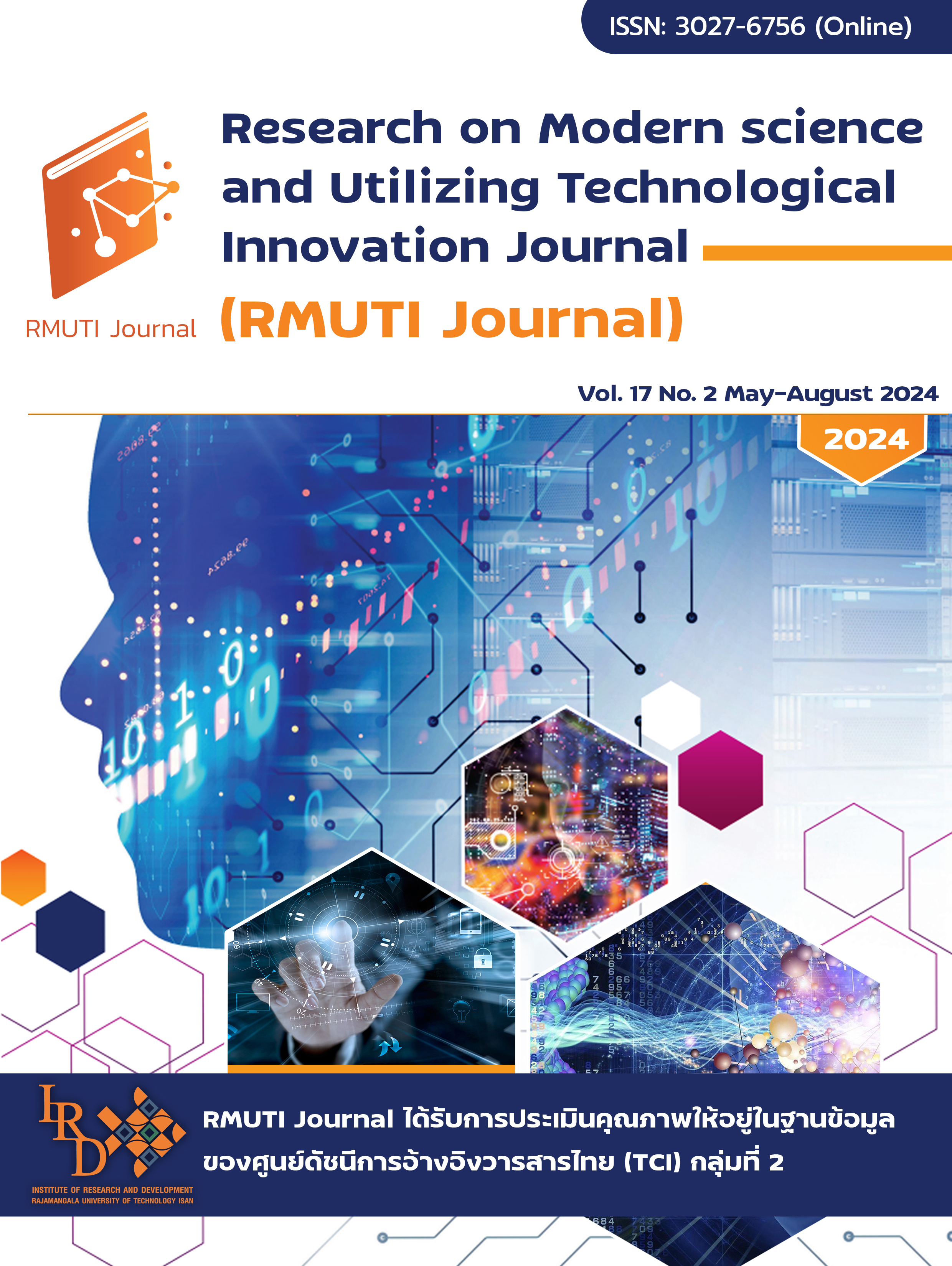สัมประสิทธิ์การสะท้อนแสงและลักษณะทางกายภาพที่มีผลต่อความเข้มแสงภายในห้องเรียนแบบบรรยายในมหาวิทยาลัยแห่งหนึ่ง กรุงเทพมหานคร
Main Article Content
บทคัดย่อ
ความเข้มของแสงสว่างในห้องเรียนมีผลกับการเรียนรู้ การศึกษาแสงสว่างในอาคารเรียนในมหาวิทยาลัยเขตเมืองที่เป็นอาคารสูงยังพบไม่มากนัก รวมถึงปัจจัยทางกายภาพที่อาจส่งผลต่อแสงสว่าง การศึกษาเชิงสำรวจครั้งนี้มีวัตถุประสงค์เพื่อศึกษาสัมประสิทธิ์การสะท้อนแสงและลักษณะทางกายภาพที่มีผลต่อความเข้มแสงสว่าง
ในห้องเรียนแบบบรรยาย 3 ขนาด ได้แก่ เล็ก กลาง และใหญ่ จำนวน 42 ห้องเรียน ภายในมหาวิทยาลัยแห่งหนึ่งเครื่องมือที่ใช้ คือ เครื่องลักซ์มิเตอร์และแบบสังเกต สถิติที่ใช้ในการวิเคราะห์ ประกอบด้วย จำนวน ร้อยละ ค่าเฉลี่ย ส่วนเบี่ยงเบนมาตรฐาน One-Way ANOVA และ Pearson’s Correlation ผลการศึกษาพบว่า ห้องเรียนขนาดเล็กและขนาดใหญ่ ส่วนใหญ่ผ่านเกณฑ์มาตรฐาน อย่างไรก็ตามห้องเรียนขนาดกลางไม่ผ่านเกณฑ์ร้อยละ 62.0 โดยห้องเรียนขนาดใหญ่มีค่าเฉลี่ยความเข้มของแสงสว่างมากที่สุดเท่ากับ 652.09 (S.D. = 31.61) ลักซ์ เมื่อเปรียบเทียบค่าเฉลี่ยแสงสว่างของห้องเรียนทั้ง 3 ขนาด พบมีความแตกต่างกันอย่างมีนัยสำคัญทางสถิติ (p<0.05) สำหรับค่าสัมประสิทธิ์สะท้อนพื้นและผนังพบว่า พื้นสีขาวมีค่าสัมประสิทธิ์มากที่สุด และสีที่แตกต่างกันมีค่าสัมประสิทธิ์สะท้อนของแสงสว่างแตกต่างกัน (p<0.05) ในห้องเรียนขนาดเล็กมีค่าสัมประสิทธิ์สะท้อนแสงที่ผิวสัมพันธ์เชิงบวกกับความเข้มของแสงสว่าง (p<0.05) สำหรับห้องเรียนขนาดกลางพบความเข้มแสงจากแสงประดิษฐ์มีความสัมพันธ์เชิงบวกกับความเข้มของแสงสว่าง (p<0.05) ค่าสัมประสิทธิ์สะท้อนแสงมีผลต่อความเข้มแสงสว่าง ซึ่งเป็นผลมาจากสีของพื้น และผนัง รวมทั้งแสงจากหลอดไฟและแสงจากภายนอก และห้องเรียนควรมีการตรวจวัดความเข้มของแสงให้อยู่ในค่ามาตรฐานเท่ากับ 400 - 500 ลักซ์ สำหรับงานอ่านและเขียนห้องเรียนควรทาด้วยผนังสีขาว และหากตรวจวัดแสงไม่เพียงพอควรเพิ่มหลอดไฟหรือกำลังวัตต์ไฟซึ่งเป็นแสงประดิษฐ์
Article Details

อนุญาตภายใต้เงื่อนไข Creative Commons Attribution-NonCommercial-NoDerivatives 4.0 International License.
เอกสารอ้างอิง
Samani, S.A., Samani, S.A. (2012). The impact of indoor lighting on students' learning performance in learning environments: A knowledge internalization perspective. International Journal of Business and Social Science. Vol. 3, No. 24, pp. 127-136.
Mogas-Recalde, J., Palau, R. (2021). Classroom lighting and its effect on student learning and performance: Towards smarter conditions. In Ludic, Co-design and Tools Supporting Smart Learning Ecosystems and Smart Education: Proceedings of the 5th International Conference on Smart Learning Ecosystems and Regional Development. pp. 3-12. Singapore : Springer Publisher
Küller, R., Ballal, S., Laike, T., Mikellides, B., Tonello, G. (2006). The impact of light and colour on psychological mood: a cross-cultural study of indoor work environments. Ergonomics. Vol. 49, No. 14, pp. 1496-507.
Kittikong, P., Sakunkoo, P., Khuancharee, K., Arkkarachiphong, K. (2017). Quantity of Illumination and physical characteristics in the classroom that affects student’s fatigue of eyes feeling Case study: A primary school at Khon Kaen province. Journal of The Office of DPC7 Khon Kaen. Vol. 24, No. 3, pp. 10-18. (in Thai)
Hongsa, T., Polyong, C.P. (2023). Risk assessment of ergonomics and school environment that are conducive to good health of students and staff in a primary school, Chonburi province: A pilot study. In The 7th International and National Rajabhat Research Academic Conference. pp. 85-95. Sakon Nakhon : Sakon Nakhon Rajabhat University Publisher (in Thai)
Winterbottom, M., Wilkins, A. (2009). Lighting and discomfort in the classroom. Journal of Environmental Psychology. Vol. 29, No. 1, pp. 63-75.
Liu, Q., Huang, Z., Li, Z., Pointer, M.R., Zhang, G., Liu, Z. (2020). A field study of the impact of indoor lighting on visual perception and cognitive performance in classroom. Applied Sciences. Vol. 10, No. 21, pp. 7436.
Minovic, S., Vincze, G., Fink, A., Fischerauer, S.F., Sadoghi, P., Leithner, A., Kamolz, L.P., Tscheliessnigg, K., Bernhardt, G.A. (2022). Positive effect of colors and art in patient rooms on patient recovery after total hip or knee arthroplasty: A randomized controlled trial. Wien Klin Wochenschr. Vol. 134, No. 5-6, pp. 221-226.
Katunský, D., Dolníková, E., Dolník, B., Krajníková, K. (2022). Influence of light reflection from the wall and ceiling due to color changes in the indoor environment of the selected hall. Applied Sciences. Vol. 12, No. 10, pp. 5154.
Announcement of the Department of Labor Protection and Welfare. (2018). Regarding lighting intensity standard. Royal Gazette. (in Thai)
Illuminating Engineering Society of North America (IESNA). (2000). IESNA lighting handbook. Avenue, N. Y. : McGraw-Hill Publishers.
Department of Occupational Safety and Health. (2018). Guidelines on occupational safety and health for lighting at workplace. Ministry of Human Resources. Malaysia
Egan, M.D., Olgyey, V.W. (1983). Architectural lighting. Avenue, N. Y. : McGraw-Hill Publishers.
Tongtrongsap, K., Meesuk, P. (2018). The effect of walls colors of artificial light from T8 LED lamps on generating of electricity from solar cells. Burapha Science Journal. Vol. 23, No. 3, pp. 1317-1329. (in Thai)
Wongmaso, K., Ingkharojrit, W. (2019). Characteristics of color and light on women's satisfaction: a case study of cosmetic counters. Master of Architecture Faculty of Architecture Chulalongkorn University. Bangkok (in Thai)
Hanafy, I., Sanad, R. (2015). Colour preferences according to educational background. Procedia – Social and Behavioral Sciences. Vol. 205, pp. 437-444.


